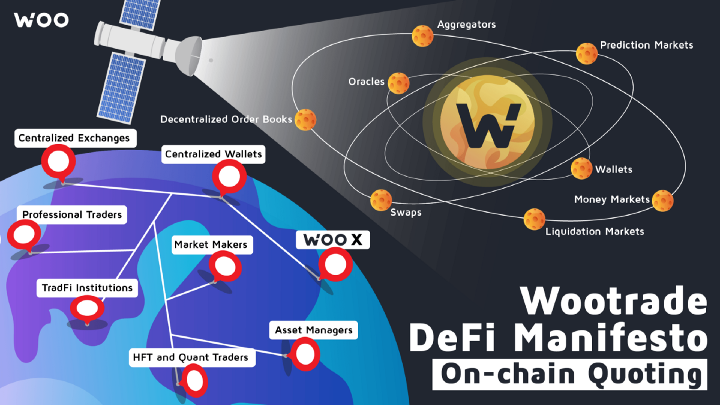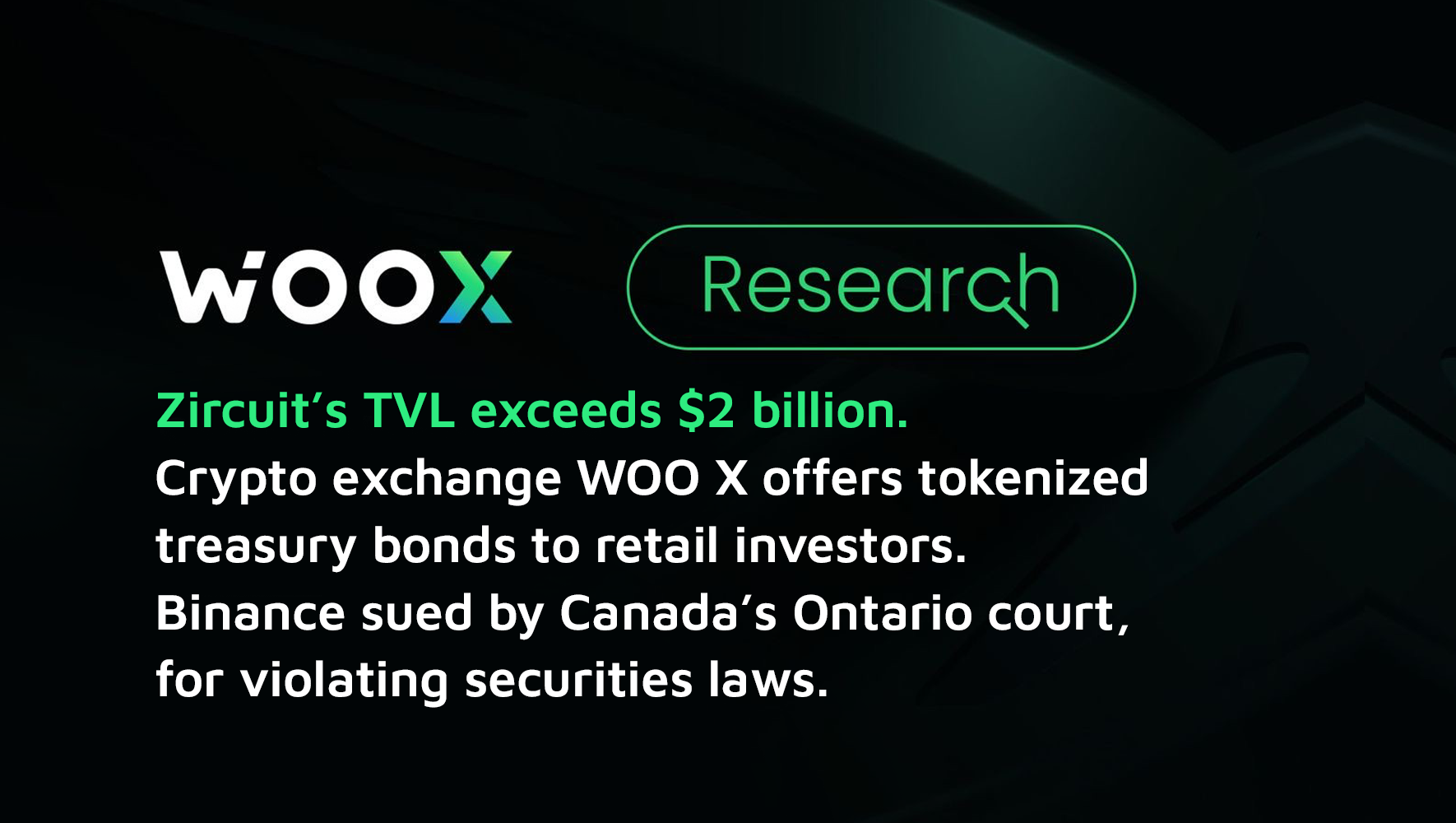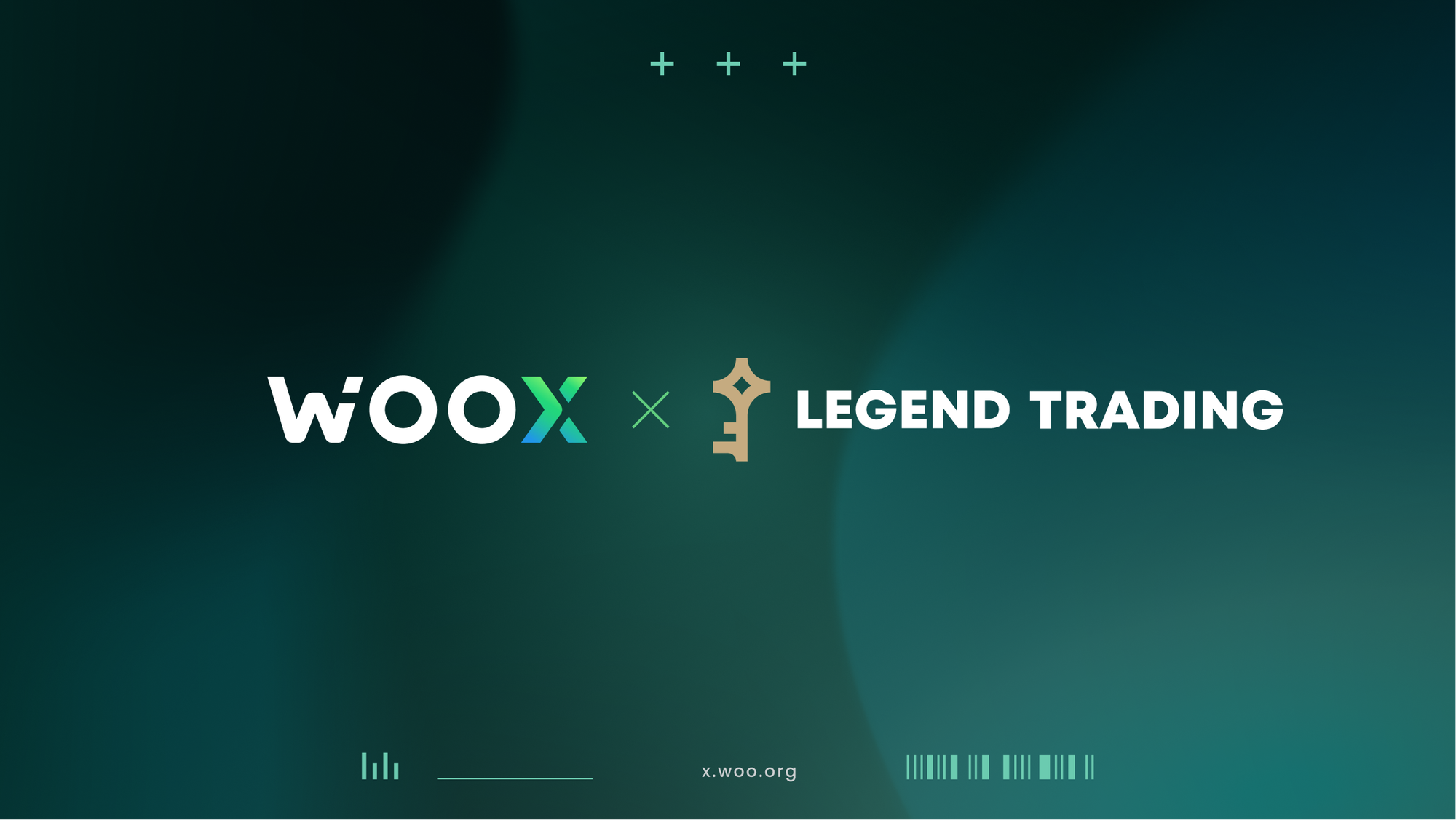Part one of Wootrade’s DeFi Manifesto explains how Wootrade is leveraging its leading liquidity and top market makers to provide better trade execution in the DeFi space.
The Challenge: Widening the Gateway
In 2019, Wootrade was founded and incubated by Kronos Research, one of the powerhouses in the CeFi trading scene. The vision was to connect exchanges, institutional traders, and OTC desks with a zero-fee liquidity network, based on the idea that aggregation and expertise would make everything more efficient. This quickly gained traction, and in 2020, Wootrade completed a successful seed round, led by some of the top VCs in the blockchain space. Later that year, the WOO token launched, giving retail investors a chance to collect a portion of the value being transacted through the network.
However, it was around that time that there was an omnipresent shift in user and investor behavior. DeFi had arrived and was changing the way people traded and interacted with cryptocurrencies. Decentralized swaps and exchanges were surpassing many Tier Two exchanges from the centralized world. Even more interesting from a Wootrade perspective was that they were struggling with some of the same issues that plagued centralized exchanges: mainly a lack of liquidity, high slippage, and sizable transaction fees. For DeFi to attract a more institutional audience, it was clear that some improvements would need to be made.
In this multi-part series, we will explore how Wootrade widens the gateway for institutional adoption and retail traders, building the infrastructure of more efficient markets.

Case study #1 — On-chain quoting and decentralized swaps with DODO
Wootrade brought their liquidity on-chain, using a combination of liquidity pools, oracles, hedging strategies, and market-makers. Users can access the pools from a third-party front-end, such as DODO’s aggregator on Binance Smart Chain. DODO was selected as an early partner because their PMM (Proactive Market Maker) algorithm allowed Wootrade to take an active role in pricing via an oracle. This system, which internally was nicknamed ‘WooFi’ proved to be quite resilient in testing.

This pool was structured along with our partners at DODO, which paired BTC (BTCB) and USDT. With only 20 BTC and 1,000,000 USDT in liquidity, the WooFi pool was able to beat the price offered on other major DEXs by a substantial margin. This was partly due to the absence of the customary high fee given to liquidity providers, a fee necessary to make up for the presence of impermanent loss on the platform. However, most of it was due to the fact that traditional AMMs are governed by the constant product formula x * y = k, with k as a constant. This formula is responsible for determining pricing and mandates that as liquidity from one side is removed (bought), the price of the asset must also change to keep the formula balanced. This quickly incurs slippage as prices are higher for orders bought in larger quantities.

Wootrade’s pools work well because the price is determined by market data from the Wootrade network, an aggregated liquidity source. If the demand for an asset increases and the pools begin to slip out of balance, Wootrade can hedge through the Wootrade network to rebalance the pools, eliminating the impermanent loss for LPs.
These WooFi pools can be replicated on any token pair that have ample trade volume, justifying the use of capital to be held on-chain. Once the process has been perfected, it can be quickly ported to other networks — of which there are many that we have identified as possible candidates.
Layer Ones:
- Ethereum
- Polkadot
- Solana
- Cosmos
- Terra
- BSC
- HECO
- OKExChain
Layer Twos:
- Optimism
- StarkEx
- Loopring
- Polygon (Matic)
- Near Protocol
- Avalanche C-Chain
- xDai
Looking ahead — Turning WooFi into a value generator
Improving trade execution on DEX aggregators is just one of the ways that Wootrade can capture more flow onto the network and increase value to WOO token holders.
Scenarios include:
- Yield opportunities for liquidity providers
- Strategic partnerships
- Increased WOO token burn rate (from buying back)
- DAO governance and benefits
- First-party products and services

Above is a simplified roadmap of how Wootrade aims to position itself in the DeFi space. The goal is to be an ecosystem enabler that supports other protocols by connecting on-chain liquidity, robust pricing data, and trading-related services without charging large ‘middleman’ fees as a business model. The goal, as always, is to find ways to bring more flow to the Wootrade network by linking bridges between the projects and platforms building on the various layers and networks in both CeFi and DeFi.
Stay tuned for Part Two of our DeFi Manifesto, where we explain how the Wooracle can make data available to other oracle services, data providers, smart contracts, and blockchain protocols by quoting market data directly to the blockchain.
- Website: https://woo.network/
- Twitter: https://twitter.com/wootraderS
- Telegram: https://t.me/wootrade
- Telegram Announcements: https://t.me/WOOTRADEann
- Medium: https://medium.com/wootrade



